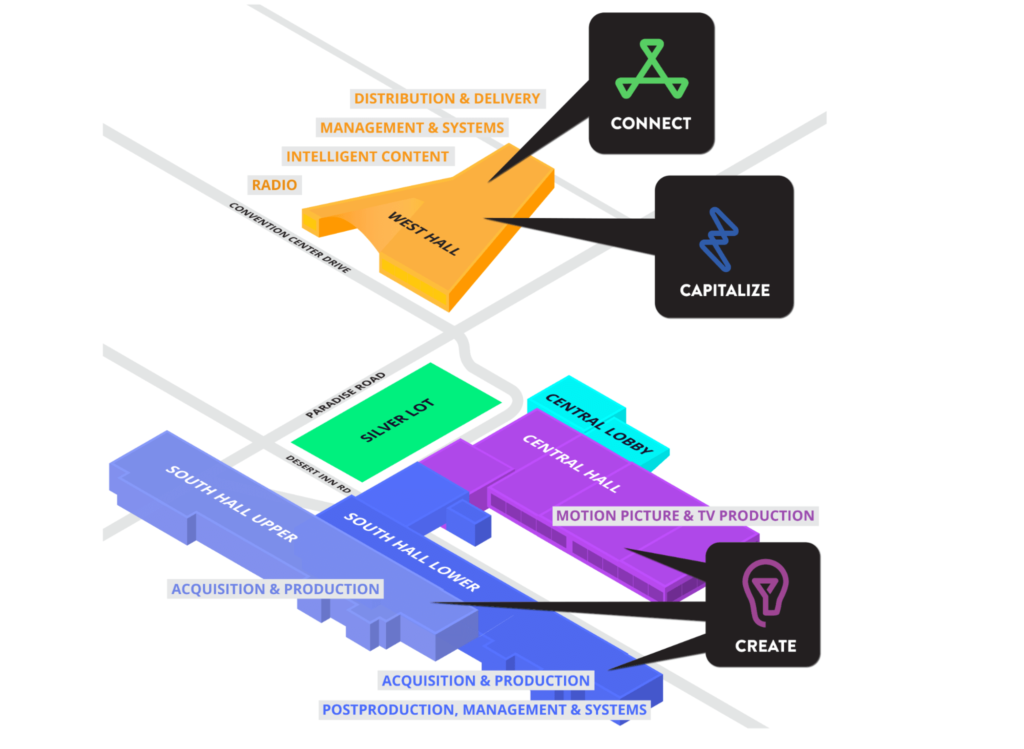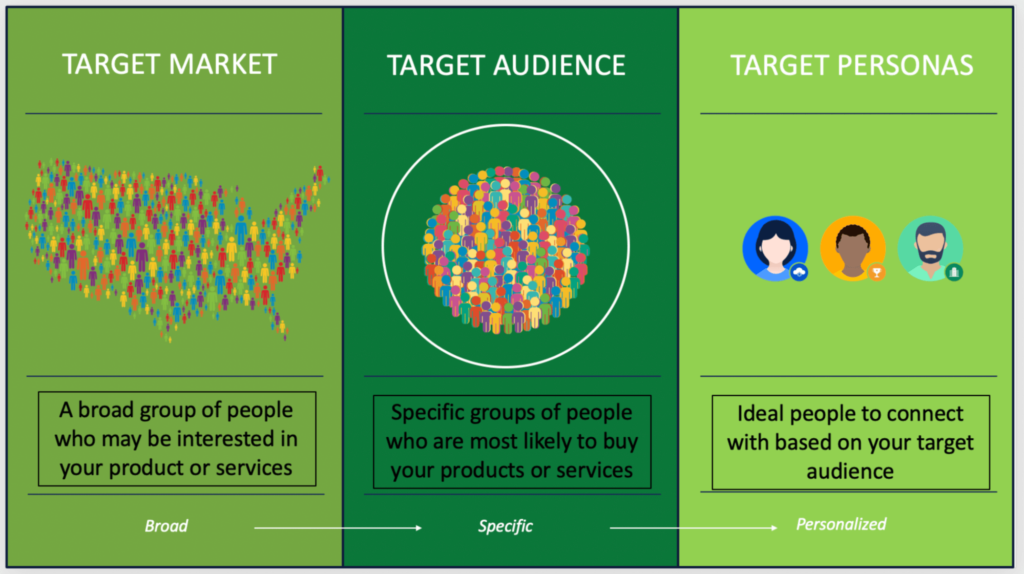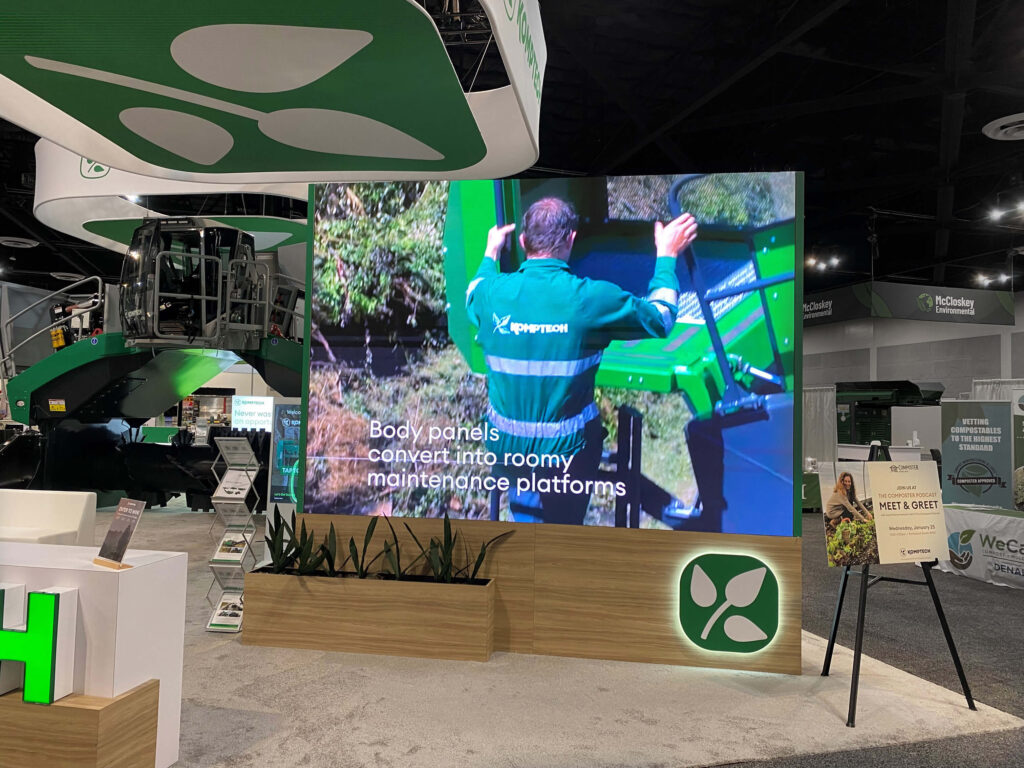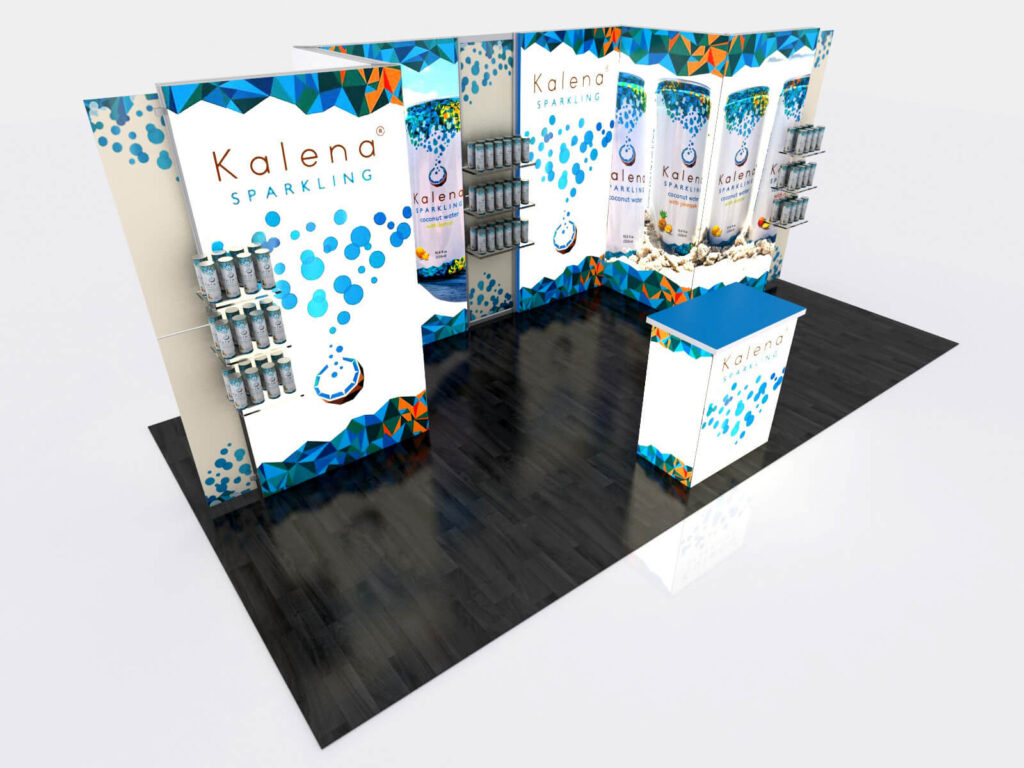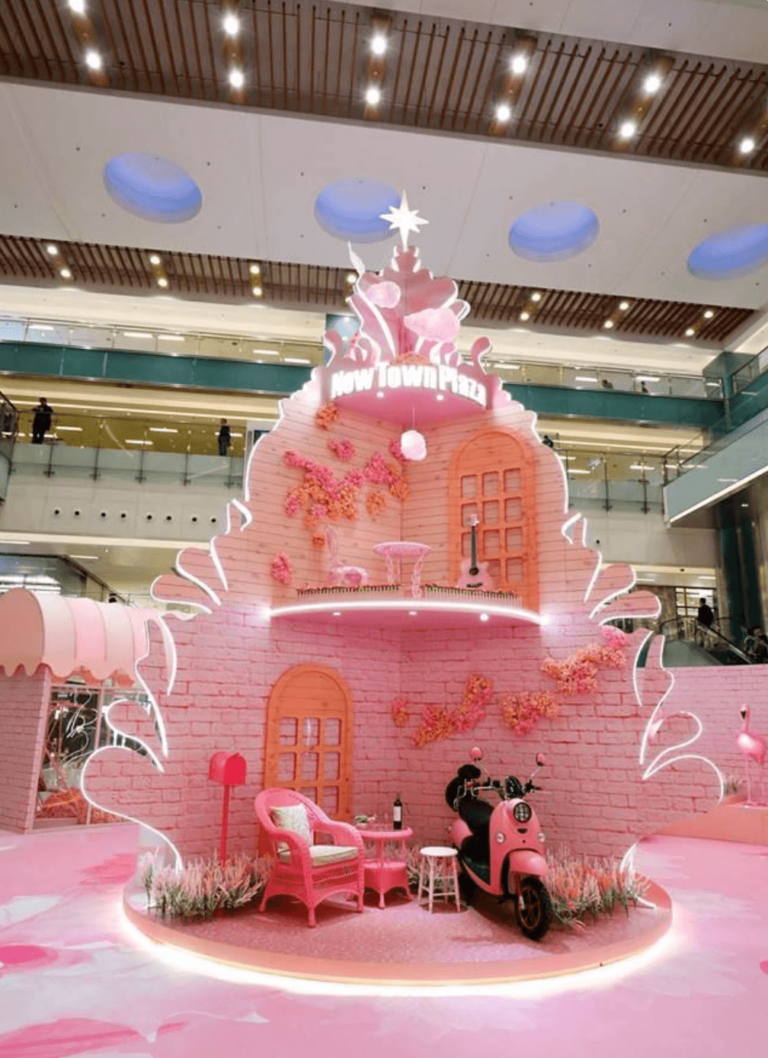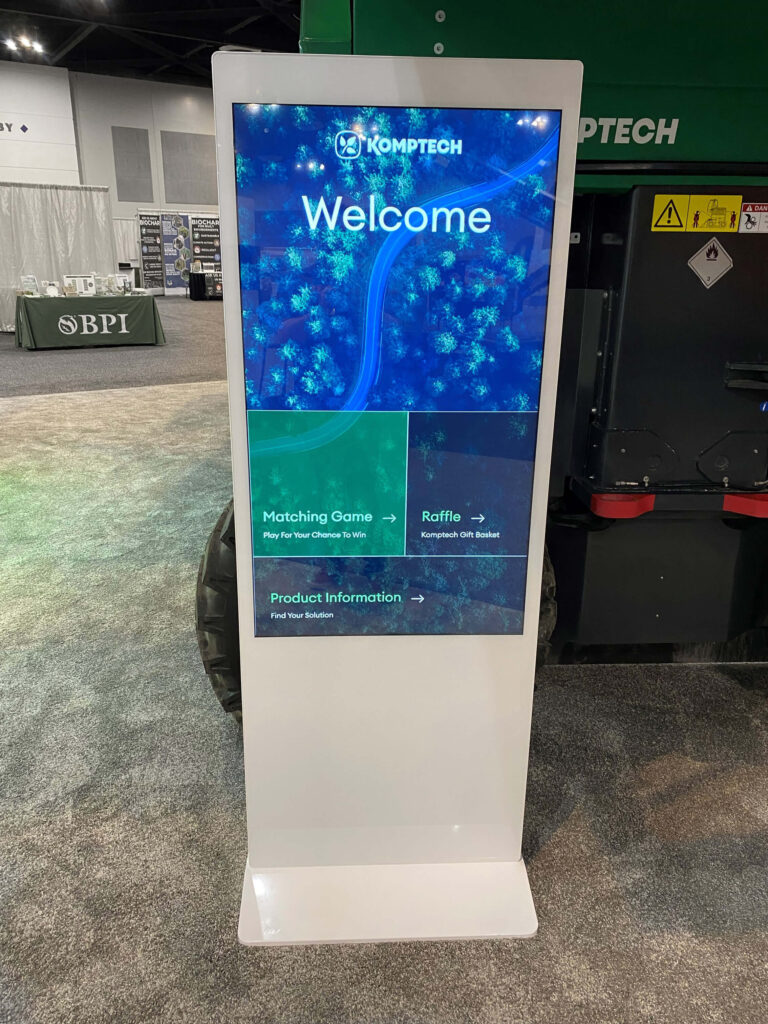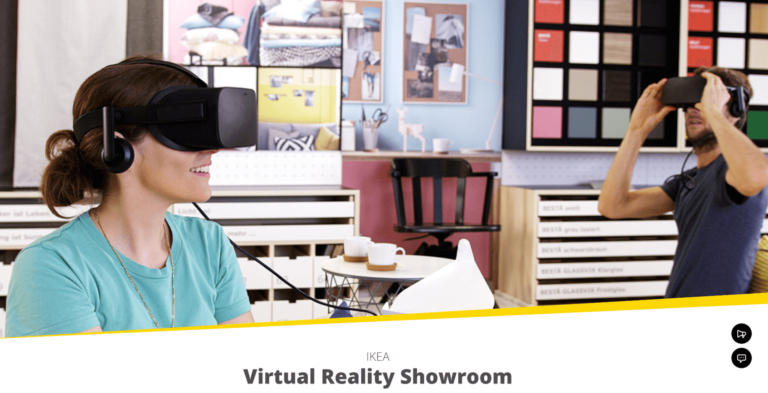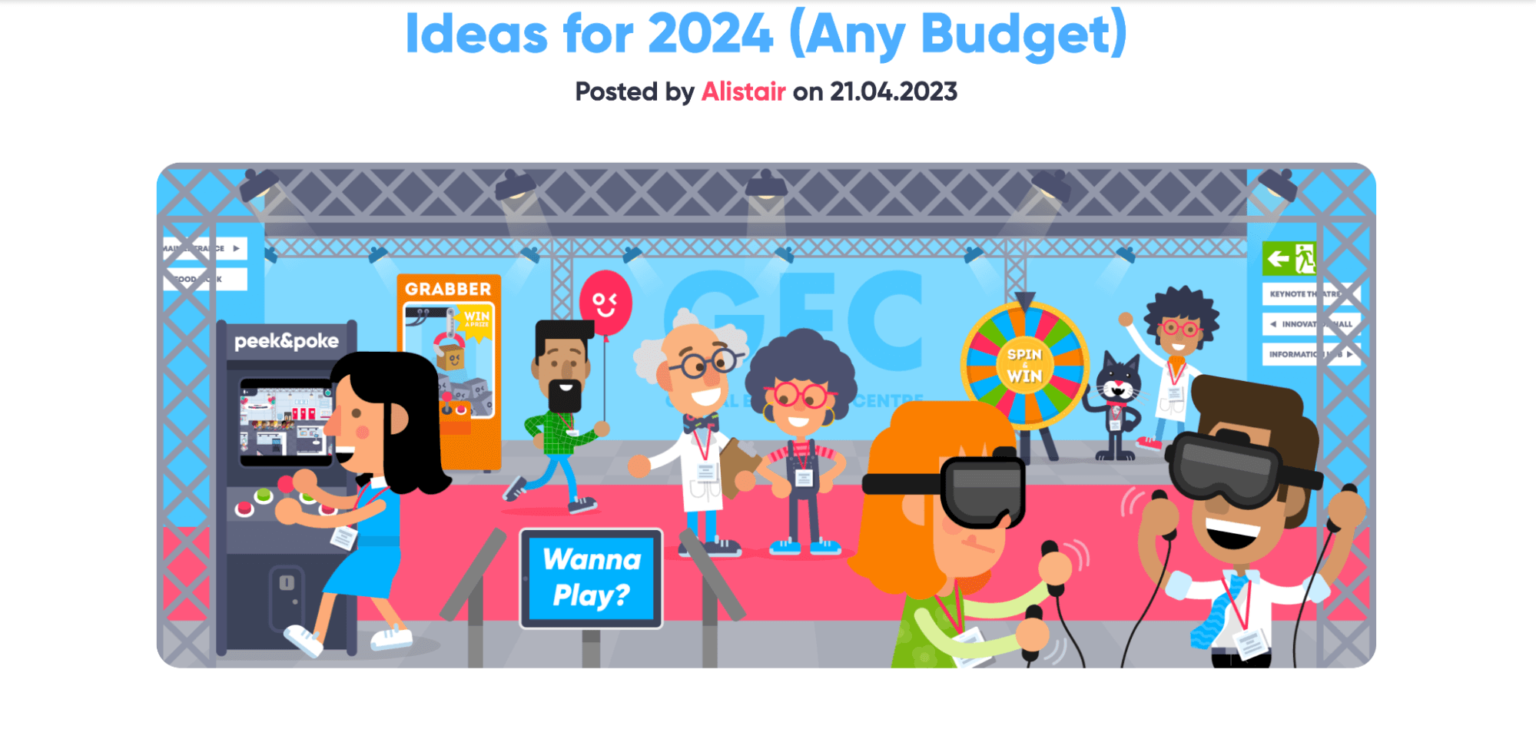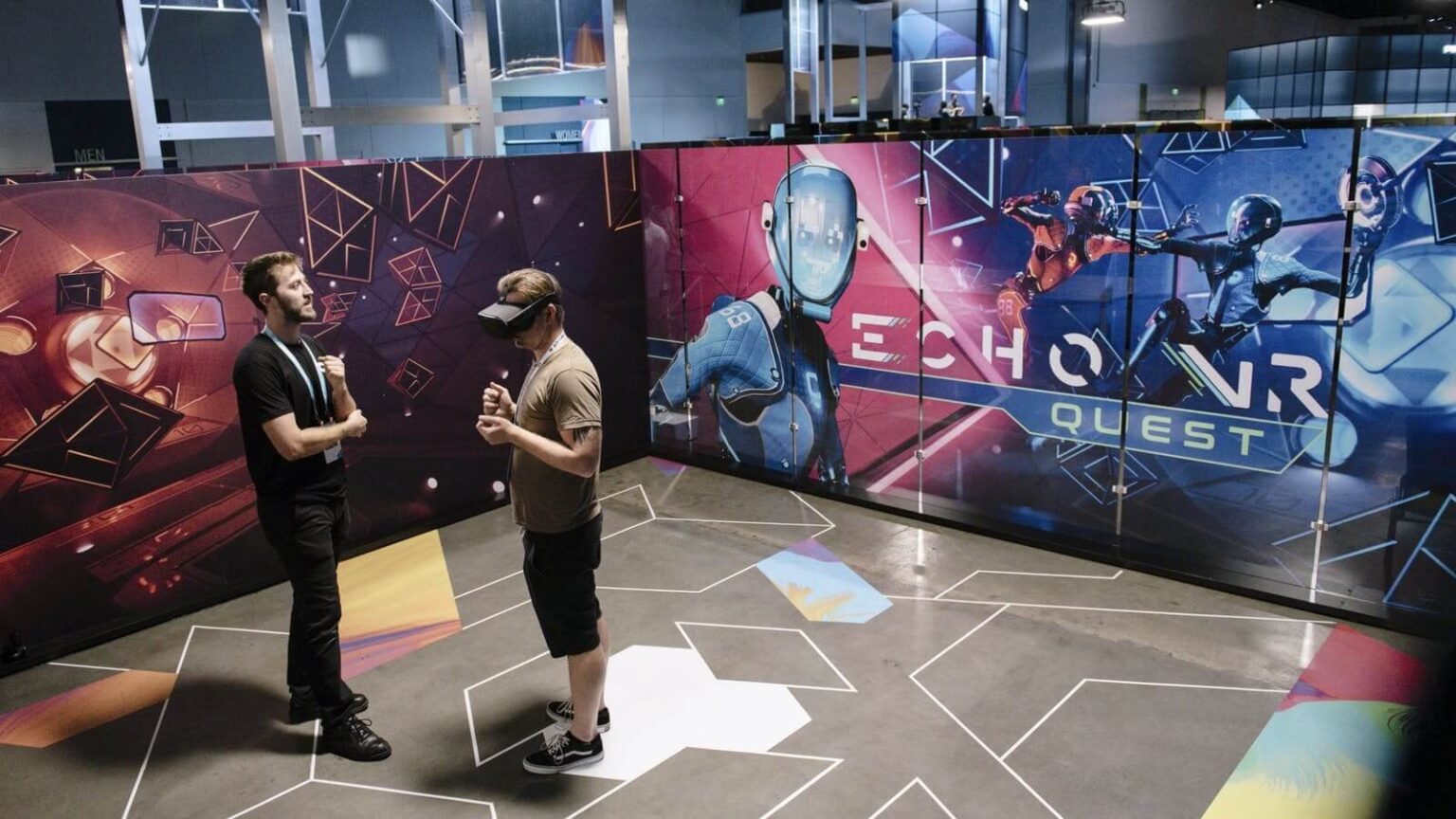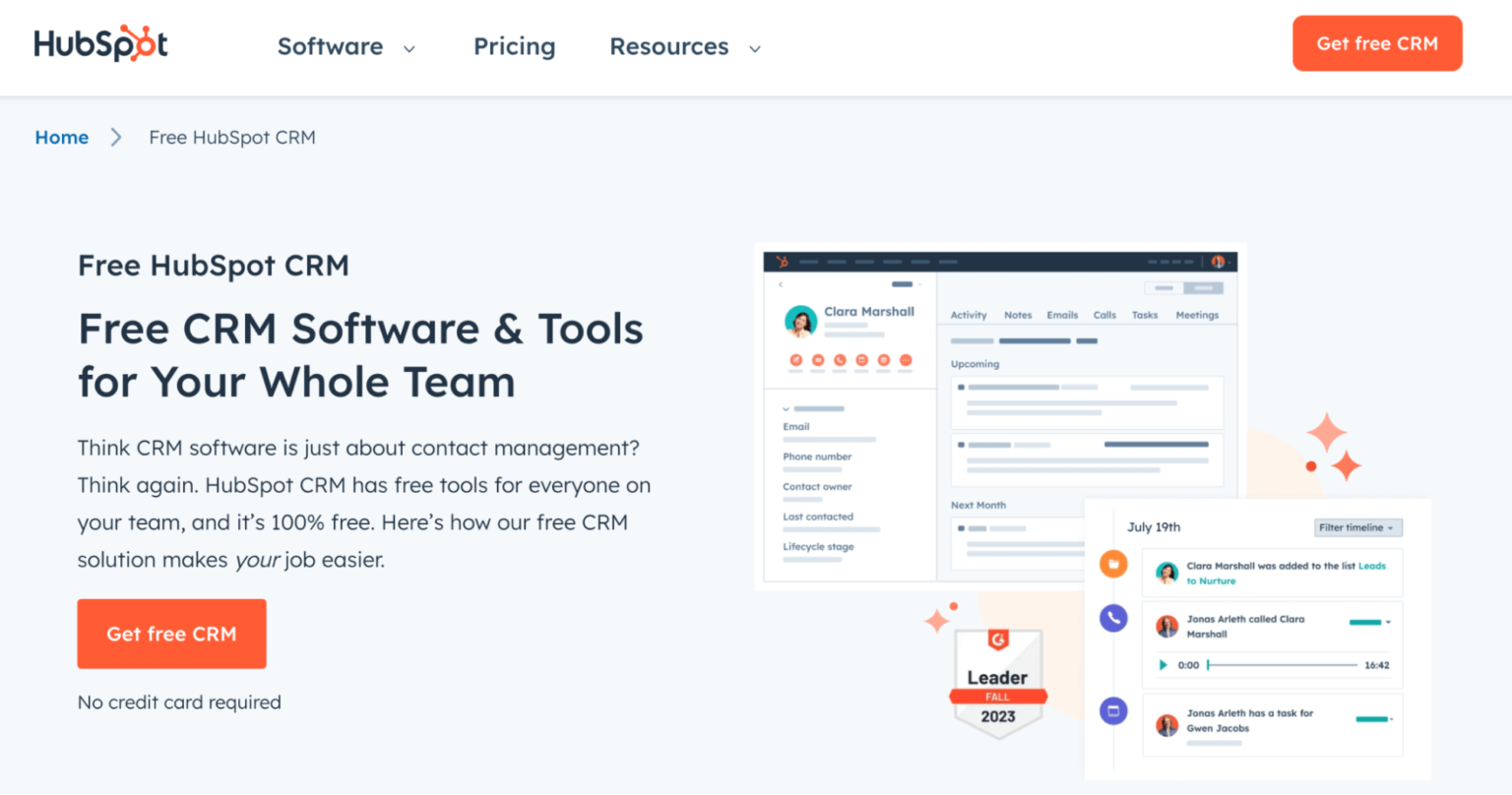
Introduction to the challenge of attracting visitors
If you’ve ever been involved in trade shows, either as an exhibitor or attendee, you know that they are the epitome of marketing. A well-executed omnichannel marketing plan incorporating a marketing mix of SEO, SEM, email marketing, social media marketing, paired with your trade show booth execution can work wonders, enabling your sales team to work their magic effectively on the exhibit floor.
The dream scenario is attracting visitors and successfully closing deals, are we right? Regardless of your business type – be it B2B, DTC, service-based, e-commerce, or SaaS – your ultimate goal is to attract visitors. And if trade shows are a crucial part of your go-to-market strategy internationally or domestically, then you’ve come to the right place.
So, continue reading to discover innovative ideas for maximizing trade show booth engagement and captivating your target audience.
In the ever-evolving landscape of marketing, trade shows remain a cornerstone for direct connection with your audience. Yet, the challenge of attracting visitors to your trade show booth has never been more daunting. We, as humans, have the attention span of a goldfish. (Enter facepalm emoji, right?)
Amidst a sea of competitors, how do you ensure that your booth doesn’t just blend into the background but stands out as a beacon for interaction? This is the question that haunts many Directors of Marketing and Marketing Managers as they prepare for their next trade show.
Understanding your target audience
The first step in solving any problem is understanding it. Who are you trying to attract to your trade show booth? Your exhibition target audience isn’t just “anyone who walks by.” It’s those individuals who are most likely to benefit from and engage with your product or service. Dive deep into their needs, preferences, and pain points. What are they looking for at the trade show? What problems can you solve for them? This understanding is the foundation upon which you’ll build your attendee engagement strategy.
One very key difference most companies overlook often is researching your competitors’ trade show booth design. This simple yet effective strategy can make a significant difference in standing out from the crowd and capturing the attention of potential customers. Whatever your goals for your event strategy, make sure you stay close to your company mission and ethos. Stay away from trends that do not make sense for your long-term marketing plan.
Interactive booth design ideas
Once you know who you’re trying to attract, the next step is to design a booth that speaks directly to them. Think beyond the standard table and banner setup. Imagine your booth as a mini-universe, where every element is an invitation to engage. Use bold, clear messaging that communicates your value proposition at a glance. Create interactive displays that invite participation, not just observation. Whether it’s a product demo that they can touch and feel or a creative setup that encourages photos and social sharing, make your booth a destination, not just a stop along the way.
Immersive Brand Environments
1. Storytelling through Space:
If you’ve ever been to a large custom island booth or stand-out trade show exhibit, think about what you loved the most. Design your trade show booth or corporate space as a narrative journey. For example, create a walk-through experience that mimics the customer’s journey with your product or service, from discovery to satisfaction. Use thematic zones, interactive displays, and live demonstrations that each tell a part of your brand story, engaging prospects both emotionally and intellectually.
2. Sensory Experiences:
As your team is coming up with the perfect trade show booth idea, make sure to utilize lighting, sound, and even scent to create an atmosphere that embodies your brand’s essence for the attendees. For instance, a company focusing on sustainability could use natural materials, plant installations, and earthy scents to reinforce their commitment to the environment. This multisensory approach can make your space more memorable and engaging.
3. Pop-up Spaces:
Leverage a company like Brave Exhibits’ expertise to design pop-up shops or temporary installations in public spaces, like malls or urban centers where your booth attendees will visit while sightseeing outside of the exhibit hall . These can serve as interactive billboards for your brand, offering hands-on experiences, product demos, or immersive environments that tell your story in an unexpected setting. Check with local vendors to see what kind of short-term contracts are offered so you can truly capitalize on booth traffic.
Digital Integrations
1. Augmented Reality (AR) Experiences:
Create AR experiences that visitors can access through their smartphones or through AR glasses provided at the booth. For example, an AR overlay could show how a piece of machinery works internally or how a software integrates with their existing systems, providing a deeper understanding of the product’s benefits.
2. Interactive Touchscreens:
Use large, interactive touchscreens to allow visitors to explore your products, services, and company history at their own pace. These could include interactive timelines, product configurators, or even gamified learning experiences that educate visitors about your offerings in a fun way.
3. Social Media Integration:
Encourage attendees to engage with your brand on social media by integrating live social media feeds into your digital displays. If your budget is lower than some of those island booths, you should focus on your social media marketing strategy to get prospect engagement. Create photo opportunities or digital experiences that visitors will want to share online, using a custom hashtag to track engagement and extend your reach beyond the event.
Blurring the Line Between Physical and Digital
1. Virtual Reality (VR) Showrooms:
Offer VR headsets that transport attendees to a virtual showroom or an immersive environment or interactive element that showcases your products in use. This can be particularly effective for products that are too large or complex to bring to a trade show or for creating virtual tours of spaces like innovation centers or corporate offices.
2. Interactive Projection Mapping:
Use projection mapping on physical objects or spaces within your booth to create dynamic, changing displays. This technology can turn static elements like walls or product models into interactive canvases, where visuals change in response to visitor interactions.
3. Digital Feedback Stations:
Set up stations where trade show attendees can leave feedback about their experience through interactive surveys or digital guestbooks. This not only provides valuable insights but also encourages booth visitors to engage with your brand on a deeper level, making them feel heard and valued.
Incorporating technology for attendee engagement
Technology has opened up a world of possibilities for trade show booth engagement. From virtual reality (VR) experiences that transport attendees to different worlds, to augmented reality (AR) that brings your product to life in unexpected ways, technology can create immersive experiences that are hard to forget. Interactive touchscreens can provide personalized information, helping attendees explore your offerings at their own pace. Social media integrations can amplify your reach, encouraging followers to share their experience with their networks in real-time.
Incorporating gamification for interaction
Once you know who you’re trying to attract, the next step is to design an exhibition booth that speaks directly to your potential customer. Think beyond the standard table and banner setup. Imagine your trade show booth as a mini-universe, where every element is an invitation to engage, spread brand awareness, and ultimately leave a lasting impression for you to follow up with after the show.
- Use bold, clear messaging that communicates your value proposition at a glance.
- Create interactive displays that invite participation, not just observation.
- Whether it’s a product demo that they can touch and feel or a creative setup that encourages photos and social sharing, make your booth a destination, not just a stop along the way.
- Using giveaways and contests effectively. (More on this below)
Everyone loves a good game. Incorporating gamification into your trade show booth can transform passive observers into active participants. Design games that are not only fun but also informative, allowing players to learn about your product or service as they play. Leaderboards, prizes, and challenges can add a competitive edge, making the experience memorable. Ensure the games align with your brand message and value proposition, so the engagement is not just entertaining but also meaningful.
Using giveaways and contests effectively
A giveaway or trade show event contests can be powerful tools for attracting visitors to your trade show booth, but they need to be used strategically. The key to brand visibility is to offer prizes that are desirable to your target audience and relevant to your brand. Instead of generic giveaways, consider items that will continue to remind them of your brand long after the trade show has ended. Contests that require participation or social sharing can also increase engagement and extend your reach beyond the trade show floor.
Before the Trade Show
In addition to a captivating design for your exhibit and competent staff, promotional items are powerful tools for creating brand awareness and leaving a lasting impression. Consider offering unique and useful promotional products that align with your brand identity. These items should be of value to attendees, prompting them to engage with your brand even after the trade show ends. When choosing promotional items, think about their relevance, durability, and practicality to ensure maximum impact.
1. Plan Unique Giveaways and Contests:
Think beyond the standard branded pens and notebooks. Choose items or experiences that resonate with your brand and appeal to your target audience. For tech companies, consider high-tech gadgets or exclusive access to beta versions of your product. For lifestyle brands, bespoke items or experiences that reflect your brand’s ethos could be more appropriate.
2. Promote Early and Often:
Leverage social media, email newsletters, and your website to build anticipation. Announce your giveaways and contest details well in advance, highlighting the uniqueness of the prizes and the fun element of participation. Use teasers and countdowns to build excitement.
3. Partner with Influencers or Industry Leaders:
Get influencers or thought leaders in your industry to promote your contest or giveaway. Their endorsement can amplify your reach and lend credibility to your event.
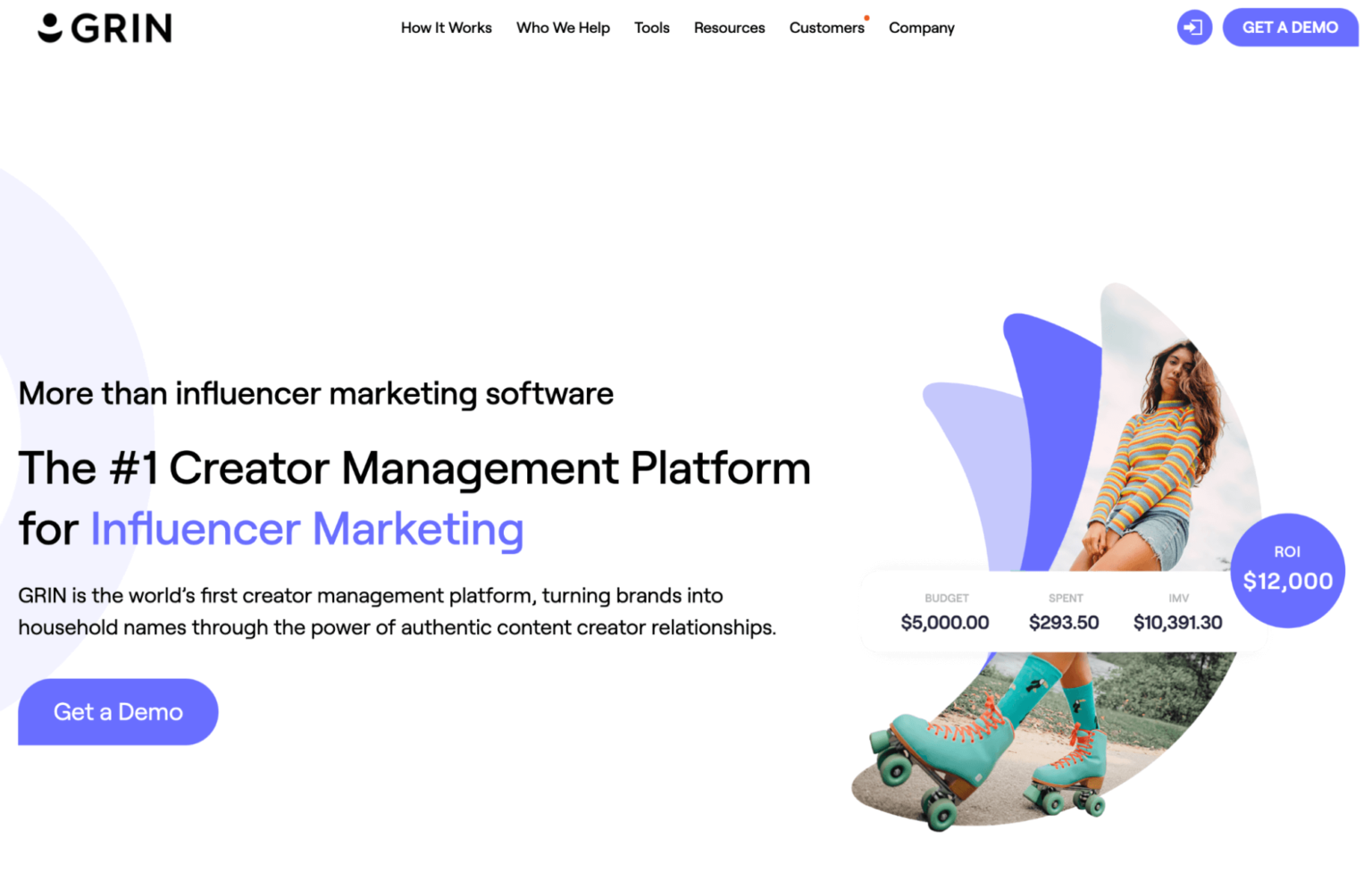
During the Trade Show
1. Make Participation Easy and Entertaining:
Whether it’s a digital scavenger hunt that guides visitors through key points about your products or an interactive game that tests industry knowledge, ensure the activity is accessible and enjoyable. Use technology like QR codes or a dedicated app to facilitate participation without hassle.
2. Leverage Exhibit Hunts:
Sign up to sponsor exhibit hunts organized by the trade show, but add a twist to your participation. Instead of just being a checkpoint, turn your booth into a mini-event within the hunt. For example, participants could earn bonus points or special prizes by completing a quick challenge or sharing their experience at your booth on social media.
3. Engage Participants with Live Updates:
Use digital screens at your booth to display live updates of contest standings or to showcase participants engaging with your giveaway. This not only adds a dynamic element to your booth but also encourages more visitors to join in.
After the Trade Show
1. Follow-up with Participants:
Send a personalized thank you message to everyone who participated in your contest or giveaway. Include photos or highlights from the event and information on how they can stay connected with your brand.
2. Announce Winners Publicly:
Use your social media platforms and other communication channels to announce the winners. Make the announcement engaging and visually appealing, and consider including a message from the winner expressing their excitement.
3. Measure and Reflect:
Analyze the effectiveness of your contest or giveaway in terms of participant engagement, social media reach, and leads generated. Use these insights to refine your approach for future events.
Standing Out with Creative Contest Ideas
Customize a Product Experience:
Offer a contest where the prize is a customized product or service experience, unique to the winner. This not only makes the prize more desirable but also deeply personalizes the winner’s interaction with your brand.
Augmented Reality (AR) Quests:
Develop an AR quest that participants can embark on using their smartphones. Design the quest to lead participants through a journey that reveals your brand’s story, culminating in a prize at your booth.
Skill-Based Competitions:
Host competitions that allow participants to showcase their skills, whether it’s coding for tech brands, design for creative products, or cooking for food-related businesses. Make the competition relevant to your industry and offer substantial rewards that reflect the effort required to participate.
By thinking creatively and focusing on engagement, your trade show giveaways and contests can transcend the typical and become memorable highlights of the event, fostering a deeper connection between your brand and its audience.
Measuring visitor engagement and ROI
Finally, it’s crucial to measure the effectiveness of your engagement strategies. This goes beyond counting foot traffic. Use technology to track interactions, collect contact information, and follow up with leads. Surveys and feedback forms can provide valuable insights into what worked and what didn’t. Measure the ROI of your trade show booth by tracking leads through the sales funnel, from initial engagement to final sale. This data will not only demonstrate the value of your trade show investment but also inform your strategy for future events.
The Importance of Dedicated Follow-Up Teams
Trade shows can be exhausting. After days of engaging with hundreds or thousands of visitors, the team present at the event often returns home tired, overwhelmed by the prospect of sorting through and following up with the leads gathered. This is where the opportunity slips through the cracks for many companies. The momentum gained at the show can quickly fade if leads are not promptly and effectively engaged.
To mitigate this, companies should consider establishing a separate, dedicated team responsible for following up on leads. This team, having not attended the show, will be fresh, focused, and ready to attack the leads with the energy and attention they deserve. Their sole purpose post-event is to sift through the collected data, prioritize leads based on predetermined criteria, and initiate personalized follow-up actions.
Utilizing Technology for Effective Lead Management
Leveraging technology is key in this process. Customer Relationship Management (CRM) tools can automate much of the follow-up process, ensuring timely engagement with leads. Integrating lead collection tools with your CRM allows for seamless transfer of data and enables the follow-up team to begin their work immediately after the trade show ends.
Automated emails can acknowledge the lead’s interest, providing additional information about your products or services and setting the stage for more personalized follow-up. However, the most effective follow-ups are tailored and personal, based on the interactions that occurred at the booth. Notes taken during these interactions can be invaluable in crafting messages that resonate with each lead.
Defining and Measuring ROI
Understanding what ROI means for your company in the context of trade shows is crucial. It’s not just about the immediate sales or leads generated; it’s also about brand exposure, market research insights gained, and strategic relationships developed.
To effectively measure trade show ROI, set clear objectives for the trade show beyond lead generation, such as increasing brand awareness, launching a new product, or establishing partnerships. Each objective should have associated metrics to evaluate success.
For lead generation, track how many leads move through the sales funnel to become customers. For brand awareness, measure social media mentions, website traffic spikes, or survey attendees about brand recall.
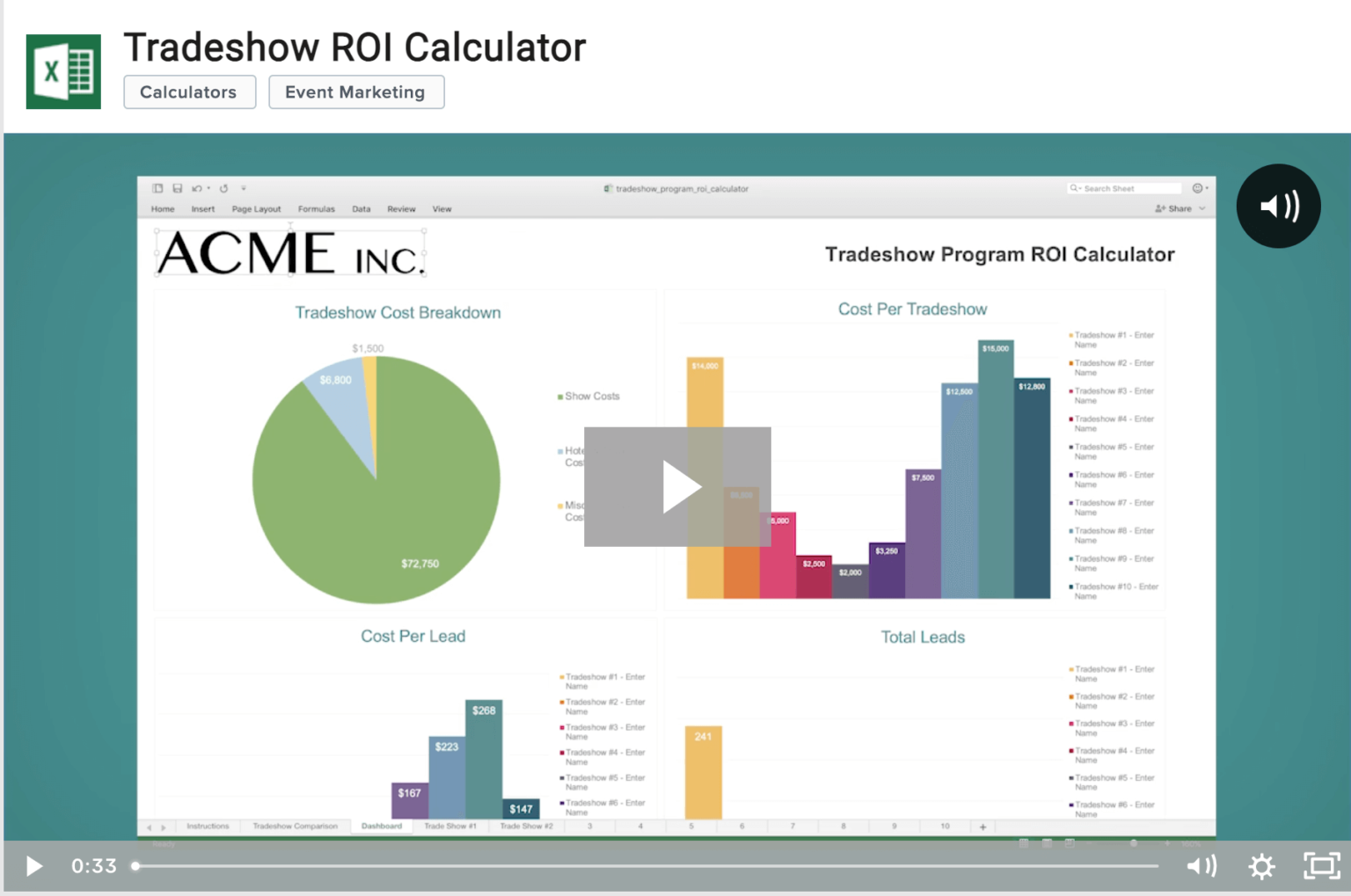
Long-term Strategy and Continuous Improvement
The data gathered and the insights from the follow-up process should feed into a continuous improvement loop for trade show participation. Analyze which aspects of the booth engagement and follow-up process worked well and which did not. This analysis can inform future strategies, not only for trade shows but for broader marketing and sales efforts.
Moreover, consider the long-term value of the relationships initiated at the trade show. Some leads might not convert immediately but could become valuable customers or partners over time. A well-structured follow-up process helps nurture these relationships, maximizing the long-term ROI of your trade show investment.
In conclusion, maximizing ROI from trade shows requires a strategic approach that extends beyond the event itself. By establishing a dedicated follow-up team, leveraging technology for efficient lead management, and adopting a long-term perspective on ROI, companies can significantly enhance the effectiveness of their trade show participation. This thoughtful approach ensures that the time and resources invested in trade shows translate into tangible business outcomes.
Conclusion
Maximizing trade show booth interaction requires a combination of deep understanding of your target audience, innovative design, strategic use of technology, gamification, and effective follow-up. By creating an engaging, interactive, and memorable booth experience, you can stand out in the crowded trade show landscape, attract more booth visitors, and ultimately drive more business. Remember, the goal is not just to attract visitors to your booth but to create meaningful interactions that build lasting relationships.
In a world where standing out at trade shows and events is more crucial than ever, Brave Exhibits emerges as a guiding light, helping you think differently and connect more deeply with your audience. With over 25 years of experience, our team at Brave Exhibits specializes in creating exhibits, environments, events, and integrating digital experiences that not only meet but exceed your strategic goals.
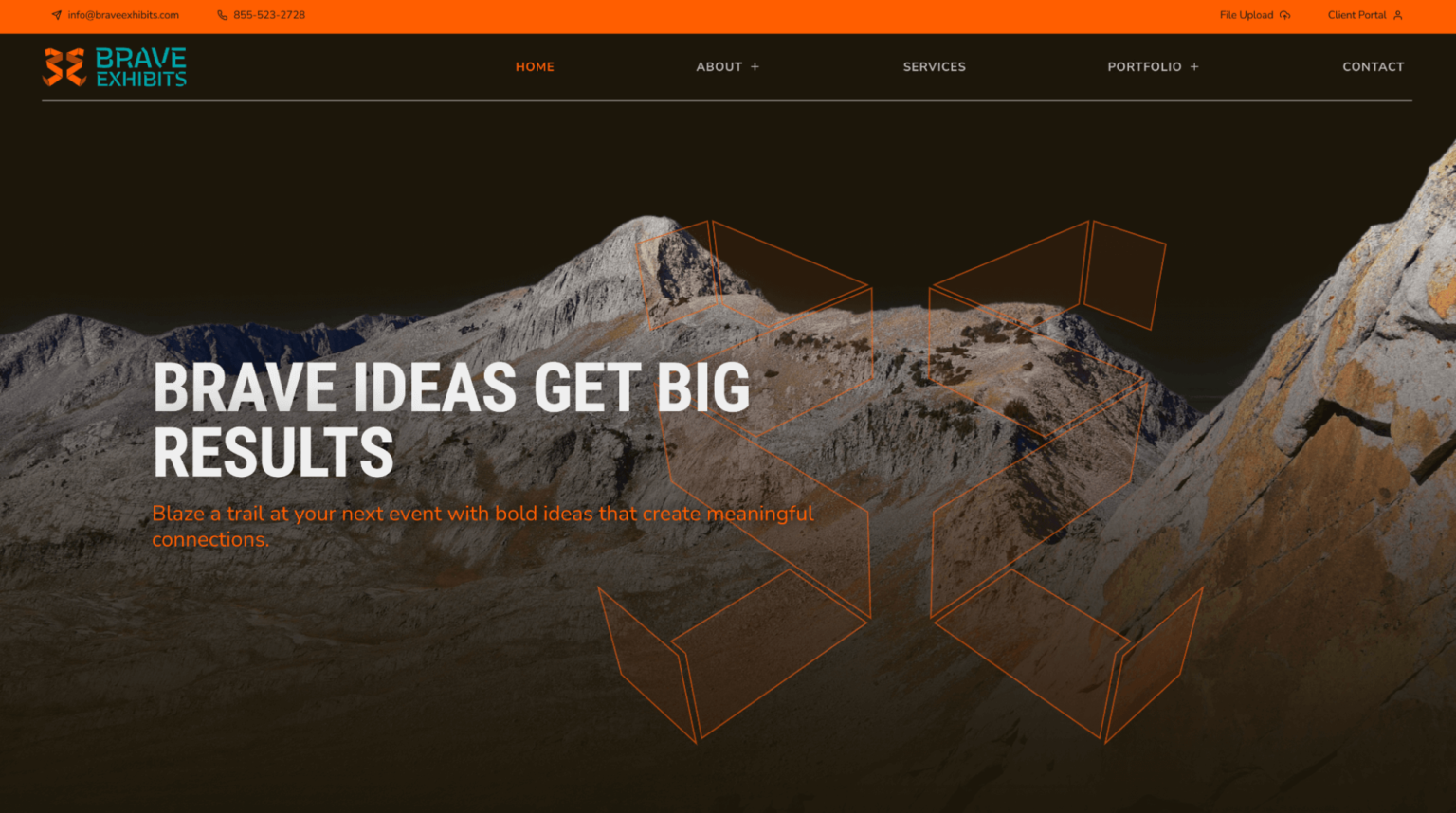
Our proven process ensures a stress-free and streamlined experience, allowing you to focus on what truly matters—making meaningful connections with your audience. Whether it’s through strategy & planning, design & build, or delivery & logistics, our approach is designed to craft a dramatic and memorable experience for your prospects and customers.
Ready to transform your trade show and event marketing programs? Partner with Brave Exhibits for your next project. Get in touch today and discover new possibilities for engagement.
